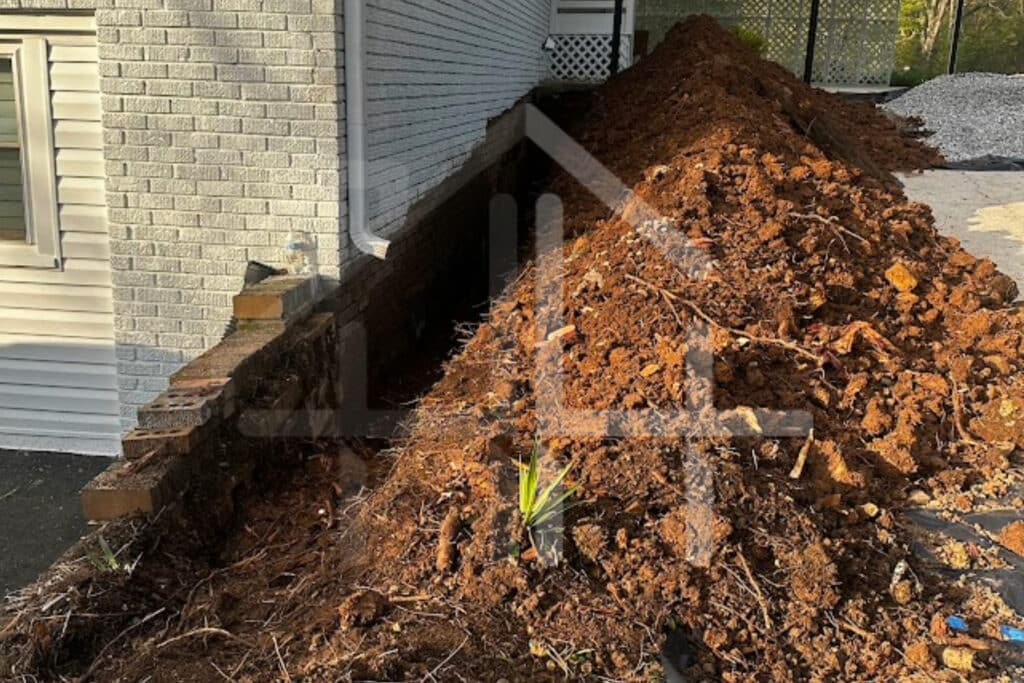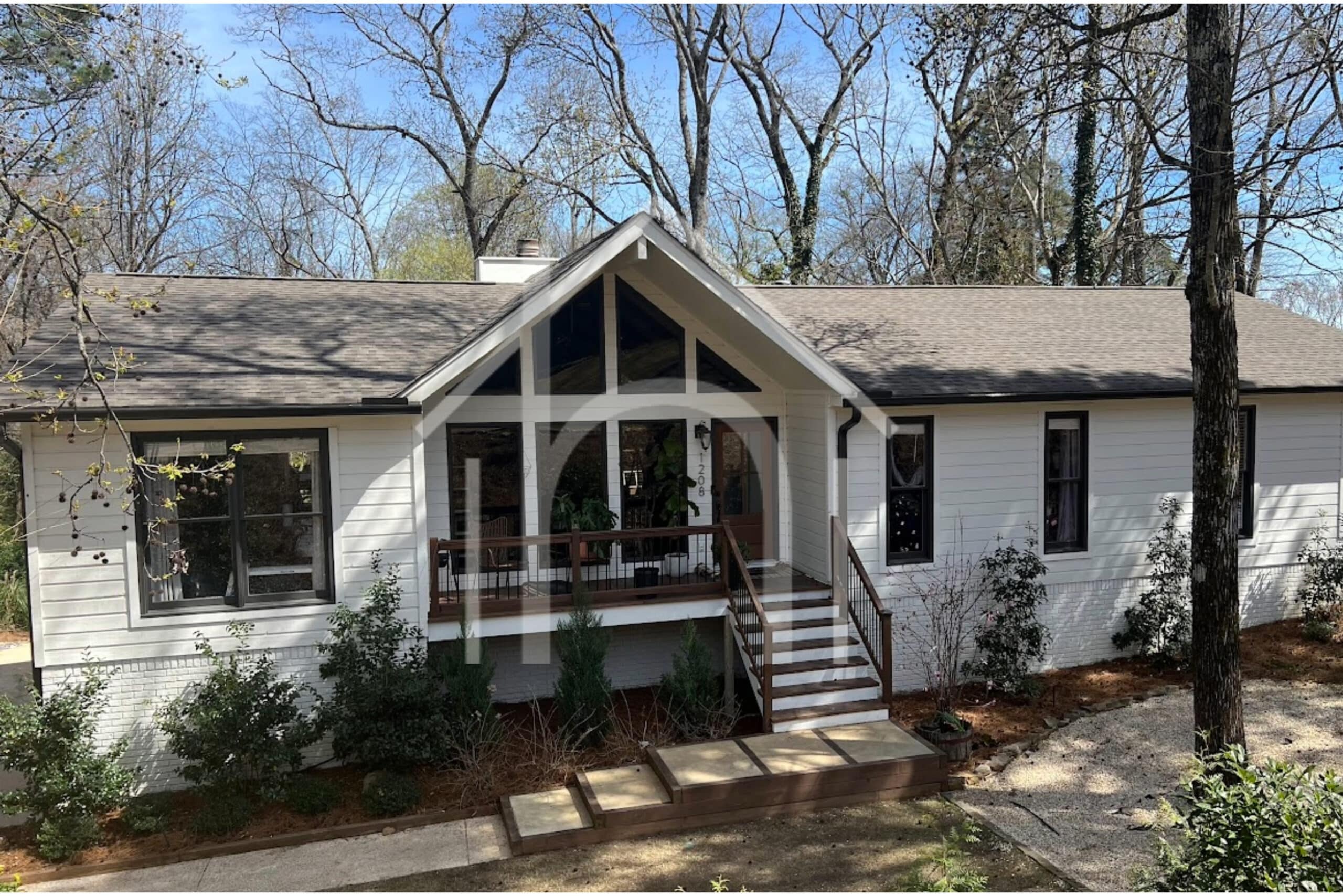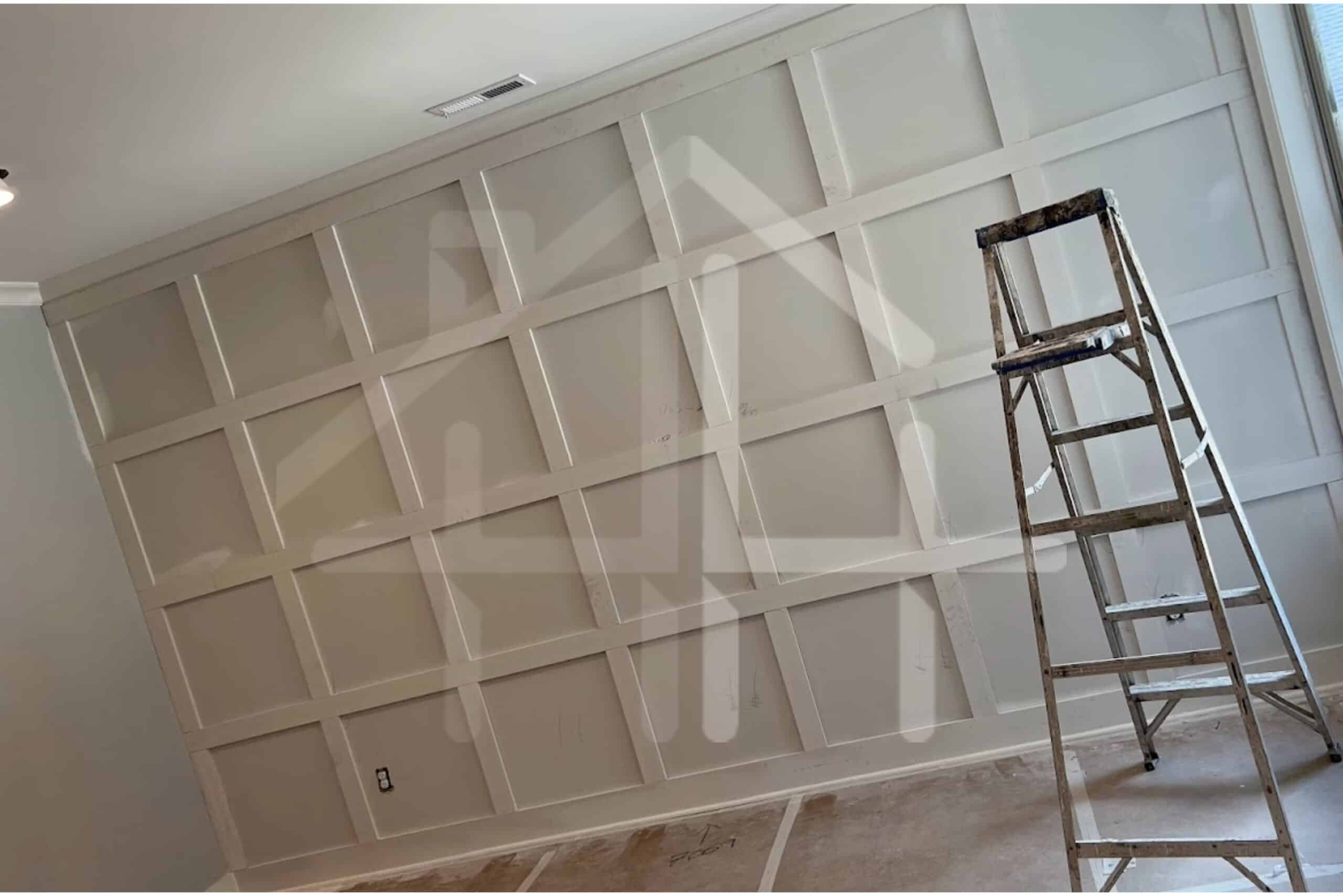In Birmingham, Alabama, heavy rainfall isn’t unusual, but it often leaves homeowners grappling with significant yard drainage issues. These complications can lead to water pooling, which not only damages structures but also compromises the health of plants and trees. Groundwater, influenced by rainfall patterns, plays a vital role in landscape drainage, emphasizing the importance of effective solutions like French drain installation.
Hudson Homes, specializing in French drain installation for Birmingham homes, offers an array of services tailored to address these drainage concerns. By selecting the right French drain system – whether it’s a drain in yard, around the house, or for landscaping purposes – homeowners can protect their property from water damage. The upcoming sections will delve into everything one needs to know about drains, from understanding their necessity and exploring the cost aspects to the installation process and maintenance tips.
Understanding French Drains
French drains, a time-tested solution for managing water drainage, offer an effective way to protect properties from water damage. This section will delve into the mechanics, uses, and benefits of drains, particularly focusing on their implementation in residential settings like those provided by Hudson Homes in Birmingham.
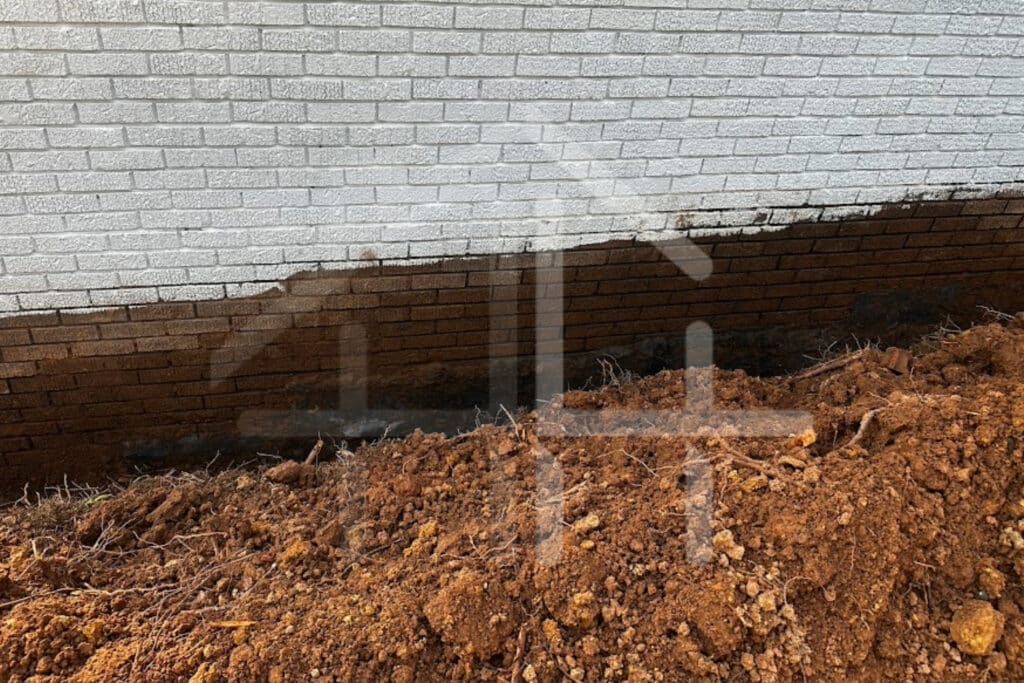
What is a French Drain?
A French drain consists of a trench filled with gravel and a perforated pipe designed to redirect surface water or groundwater away from specific areas. Invented in 1859 by Henry Flagg French, this system was initially used to drain water away from agricultural fields. Today, it serves a broader purpose, including protecting building foundations, basements, and landscaped areas from water damage.
How Does a French Drain Work?
- Water Collection: Water enters the drain system through a perforated pipe that is surrounded by gravel. The holes in the pipe face downward, preventing soil from entering while allowing water to seep through.
- Gravity-Driven Flow: The system leverages gravity, guiding water downhill through the pipe to a designated drainage area, such as a rain barrel or municipal drain.
- Effective Filtration: A layer of non-woven geo textile fabric surrounds the pipe, filtering out debris and preventing clogging, which ensures long-term functionality.
Key Components of a French Drain
- Perforated Pipes: These are essential for collecting groundwater. There are typically two types of four-inch corrugated pipes used: one perforated for groundwater and another solid for directing water from roofs and sub-pumps.
- Gravel and Rock: The voids within the gravel facilitate water flow, acting as a filter to keep the drainage path clear.
- Slope and Layout: The trench must have a minimum slope of 1% to ensure proper water flow from higher to lower elevations.
- Catch Basins and Outlets: Installed every 100 feet, catch basins collect standing water, while the careful placement of outlets ensures that water is directed away from the home and neighboring properties.
Benefits of Installing a French Drain
- Longevity: Properly installed French drains can last between 30 to 40 years, making them a durable solution for moisture management.
- Versatility: These drains are suitable for a variety of settings including gardens, basements, and around foundations, effectively preventing water accumulation and protecting structural integrity.
- Cost-Effectiveness: French drains are a financially viable solution compared to other drainage systems, especially when considering their effectiveness and longevity.
Implementation by Hudson Homes
Hudson Homes specializes in the precise installation of French drains, ensuring each system is tailored to the unique landscape and drainage needs of Birmingham homes. With expertise in site assessment and system design, Hudson Homes provides a seamless solution for homeowners looking to enhance their property’s drainage system. Whether it’s installing a new French drain around the house or integrating it with existing landscaping, Hudson Homes ensures every installation is optimized for both function and aesthetics, safeguarding your home against potential water damage.
Determining the Need for a French Drain
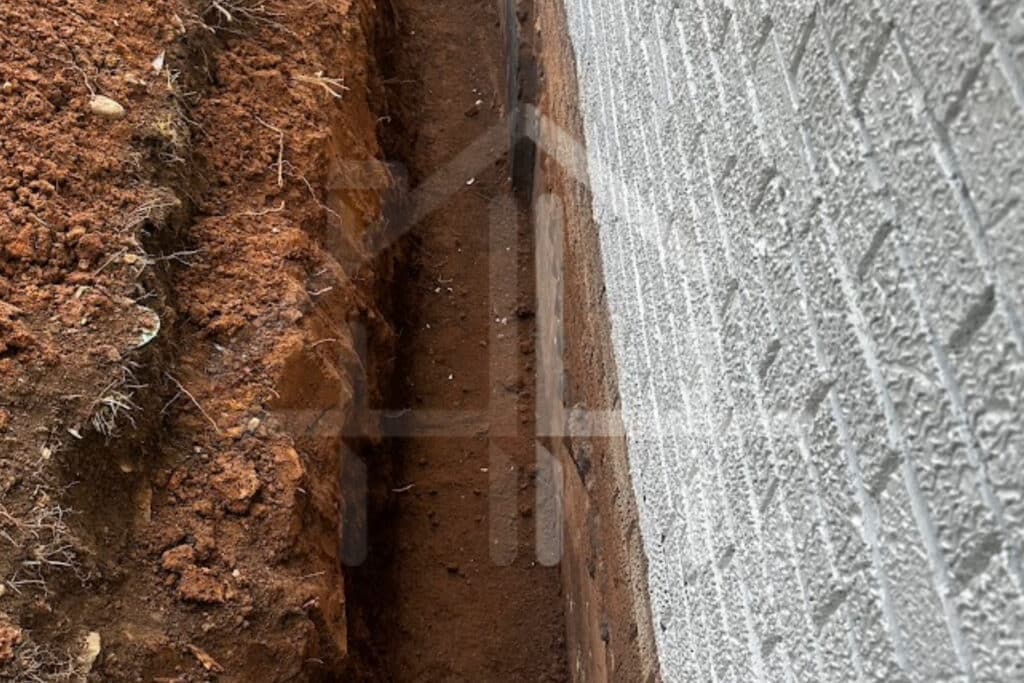
Assessing Drainage Issues
- Percolation Test: To determine if your yard has drainage issues, conducting a percolation test is essential. Here’s how you can gauge:
- If water drains within an hour, your soil has normal percolation.
- A drainage time of up to 12 hours suggests moderate drainage issues.
- More than 24 hours indicates a severe drainage problem.
Signs of Water Damage and Poor Drainage
- Standing Water: Presence of standing water or puddles in your yard often signals inadequate drainage, necessitating a French drain.
- Waterlogged Yard: A consistently soggy yard indicates that the existing drainage system is insufficient.
- Basement Moisture: If your basement is damp or leaky, installing a French drain can help protect your foundation by redirecting water.
- Mosquito Infestation: An increase in mosquitoes can be due to stagnant water; a French drain helps eliminate these breeding grounds.
- Foundation Cracks: Visible cracks in the foundation may be a result of water damage; a French drain can prevent further issues.
Identifying Specific Needs for a French Drain
- Oversaturated Soil: If the soil is too wet, causing plant roots to drown, a French drain can help maintain the correct moisture balance.
- Crawl Space Issues: Water in your crawl space can lead to mold and damage to your home. A French drain, possibly paired with a sump pump, can address this.
- Retaining Walls on Slopes: For homes with retaining walls on slopes, a French drain can prevent water buildup and ensure stability.
When to Contact a Professional
- Persistent Flooding: If you experience regular flooding in your yard or driveway, it’s time to consider a French drain.
- Musty Smells: Damp or musty odors in basements or crawl spaces are a clear sign of excess moisture, which a French drain can mitigate.
- Soil Erosion: Erosion in your yard could indicate poor drainage. Installing a French drain can help stabilize the soil and preserve your landscaping.
For homeowners in Birmingham facing these issues, Hudson Homes specializes in assessing and installing the appropriate French drain systems tailored to your specific needs. Their expertise ensures that each installation is conducted with precision, ultimately protecting your property from water-related damages and enhancing its usability.
Cost of Installing a French Drain
Understanding the financial implications of installing a French drain in Birmingham is crucial for homeowners considering this effective water management solution. Hudson Homes provides expert French drain installation services, ensuring that each project is tailored to meet specific landscape and budget needs. Here’s a detailed breakdown of the costs associated with French drain installation, helping you plan your budget effectively.
Average Cost per Linear Foot
The cost of installing a French drain in Birmingham can vary widely depending on several factors, including the length, depth, and type of drain required. Here is a general cost range per linear foot:
- Surface Level Drains: $22 to $34
- Interior French Drains: $50 to $60
- Exterior French Drains: $10 to $15
Detailed Cost Breakdown for Various Lengths
To provide a clearer picture of potential total costs, here’s how prices can accumulate based on different project sizes:
| Length of French Drain (in feet) | Cost Range |
|---|---|
| 20 | $430 to $690 |
| 40 | $870 to $1,380 |
| 60 | $1,300 to $2,060 |
| 80 | $1,740 to $2,750 |
| 100 | $2,170 to $3,440 |
Factors Influencing Cost of a French Drain
Several elements can affect the final cost of installing a French drain. These include:
- Length and Depth: Deeper and longer drains require more labor and materials.
- Soil Conditions: Rocky or hard soil may increase excavation difficulties.
- Root Removal: Presence of large roots can complicate the installation process.
- Grading Requirements: Necessary landscaping adjustments to ensure proper slope and drainage.
- Foundation Work: Additional costs if integration with the home’s foundation is needed.
- Location and Accessibility: Costs may vary based on the ease of access to the site.
Additional Costs to Consider
Beyond the basic installation, there might be other expenses involved:
- Labor Costs: Typically ranges from $50 to $200 per hour.
- Materials: Includes costs for perforated pipes and gravel.
- Landscape Repair: Post-installation landscape restoration can include lawn seeding, sod installation, and more.
Hudson Homes: Tailored Solutions
Hudson Homes specializes in providing customized French drain solutions that cater to the unique requirements of each property in Birmingham. With a focus on quality and efficiency, Hudson Homes ensures that every installation not only meets but exceeds homeowner expectations, effectively protecting properties from water damage while enhancing overall land usability.
Installation Process
Preparing for Installation
- Call Before You Dig: Before starting the installation, it’s crucial to ensure safety by calling 811. This service locates and marks all underground utility lines, preventing any accidental damage during digging.
- Site Assessment and Planning: Evaluate the area where the French drain will be installed. Identify the highest point of water collection and the most suitable outlet point. Hudson Homes excels in providing detailed assessments to optimize the placement and function of your French drain.
- Marking the Trench Path: Using flags or spray paint, mark the path for the trench. It should slope from the highest point of water collection to the outlet, ensuring a minimum slope of one inch for every 10 feet to facilitate proper drainage.
Digging the Trench
- Dimensions and Digging: Dig a trench approximately 18 inches deep and 9 to 12 inches wide. The trench should follow the marked path, maintaining the necessary slope.
- Grading the Area: Ensure the area around the trench is graded with at least a one percent slope to prevent water pooling, enhancing the efficiency of the French drain.
Installing the French Drain Components
- Lining the Trench: Line the trench with a water-permeable filter fabric or a weed barrier. This layer prevents soil and roots from clogging the perforated pipe.
- Adding Gravel Base: Fill the bottom of the trench with about 3 inches of gravel or landscaping stone, then compact it to create a stable base for the pipe.
- Placing the Perforated Pipe: Install the perforated pipe along the trench, starting from the highest point. Ensure the pipe has enough fittings to stretch from the inlet grate to the outlet.
- Covering the Pipe: Add another layer of gravel or crushed stone over the pipe, about 3 inches thick, to secure it and facilitate water filtration.
Finalizing the Installation
- Covering with Topsoil: Fill the remainder of the trench with topsoil, compacting it to ensure the surface is even and blends with the surrounding landscape.
- Installing Inlet and Outlet: Place an inlet grate at the area of most significant water collection and ensure the outlet is positioned to effectively direct water away from the property.
- Preventative Maintenance: After installation, perform regular inspections and clean the inlet grate and outlet point to maintain the drain’s effectiveness.
Special Considerations for Different Needs
- Surface Water Management: For managing surface water, a shallow French drain or curtain drain might be ideal. It extends horizontally across the property, uphill from the area you want to dry out.
- Basement Protection: To prevent basement flooding, a deep French drain or footing drain should be installed around the perimeter of the house at the footing level.
- Retaining Walls: If your property includes a retaining wall on a slope, installing a French drain behind the first course of stones or blocks can help stabilize the structure by alleviating water pressure.
With Hudson Homes, homeowners in Birmingham can trust that their drain installation will be handled with expertise, ensuring a durable and effective solution to manage yard drainage and protect their property.
Maintenance and Troubleshooting
Regular Inspection and Cleaning
Maintaining a French drain is crucial to ensure it operates efficiently and avoids potential clogging issues. Hudson Homes recommends conducting annual inspections to assess the functionality of your drain system. Here are key steps to keep your French drain in optimal condition:
- Annual Testing: Flood the system annually to check its capacity to handle water. If there’s a backup, it may indicate a blockage.
- Use of Pressure Washer: Annually clean the French drain using a pressure washer to remove minor sediments and debris.
- Heavy-Duty Cleaning: For more stubborn clogs, such as compacted mud or roots, utilize a heavy-duty drain snake. This tool is effective in breaking up tough blockages that a standard cleaning might not address.
Troubleshooting Common French Drain Issues
Even with regular maintenance, issues can arise that may require more specific troubleshooting methods. Here are some common problems and their solutions:
- Water Back-Up: If testing shows water backing up, inspect for blockages. Common culprits include tree roots, sand, and debris accumulation.
- Persistent Clogs: If regular cleaning does not resolve clogging, it might be necessary to use a jetter, which can effectively clean the gravel and pipe without causing damage, provided the pressure is correctly adjusted.
- Visual Inspections: Regularly check the area around the French drain for signs of surface damage or unusual sediment build-up, which might indicate an underlying issue.
Professional Maintenance Services
For homeowners who prefer not to undertake maintenance themselves or encounter complex issues, Hudson Homes offers professional maintenance services. These services include:
- Expert Assessment: Skilled technicians can evaluate and troubleshoot your French drain, identifying and resolving issues more efficiently.
- Advanced Cleaning Tools: Professionals use high-grade equipment, like electric sewer snakes and jetters, to thoroughly clean and maintain the drainage system.
- Custom Maintenance Plans: Depending on your specific needs and the complexity of your landscape, Hudson Homes can develop a tailored maintenance plan to ensure the longevity and effectiveness of your French drain.
By adhering to these maintenance guidelines and considering professional services when necessary, homeowners can significantly extend the life of their drain systems and ensure continuous protection against water damage.
Conclusion
Navigating through the complexities of yard drainage issues, we’ve explored the essential role that drains play in safeguarding our homes in Birmingham. The strategic approach of Hudson Homes in implementing these systems highlights not just their expertise but also their commitment to delivering tailored, effective solutions. From the initial assessment to the detailed installation process, and onto the indispensable maintenance tips, the guidance provided ensures homeowners are well-equipped to protect their property from the adverse effects of water damage.
Reflecting on the journey from understanding the need for a French drain to recognizing the signs of water damage and the intricate details of installation and maintenance, Hudson Homes stands as a beacon for homeowners seeking reliable, efficient drainage solutions. Their dedication to offering a seamless experience showcases the unique benefits of entrusting your home to their care. As we conclude, remember that the health of your yard and the integrity of your property rest on the decisions you make today. Should you face any drainage dilemmas, leaning on the proficiency of Hudson Homes promises not just a solution, but a future safeguarded against water’s whims.

